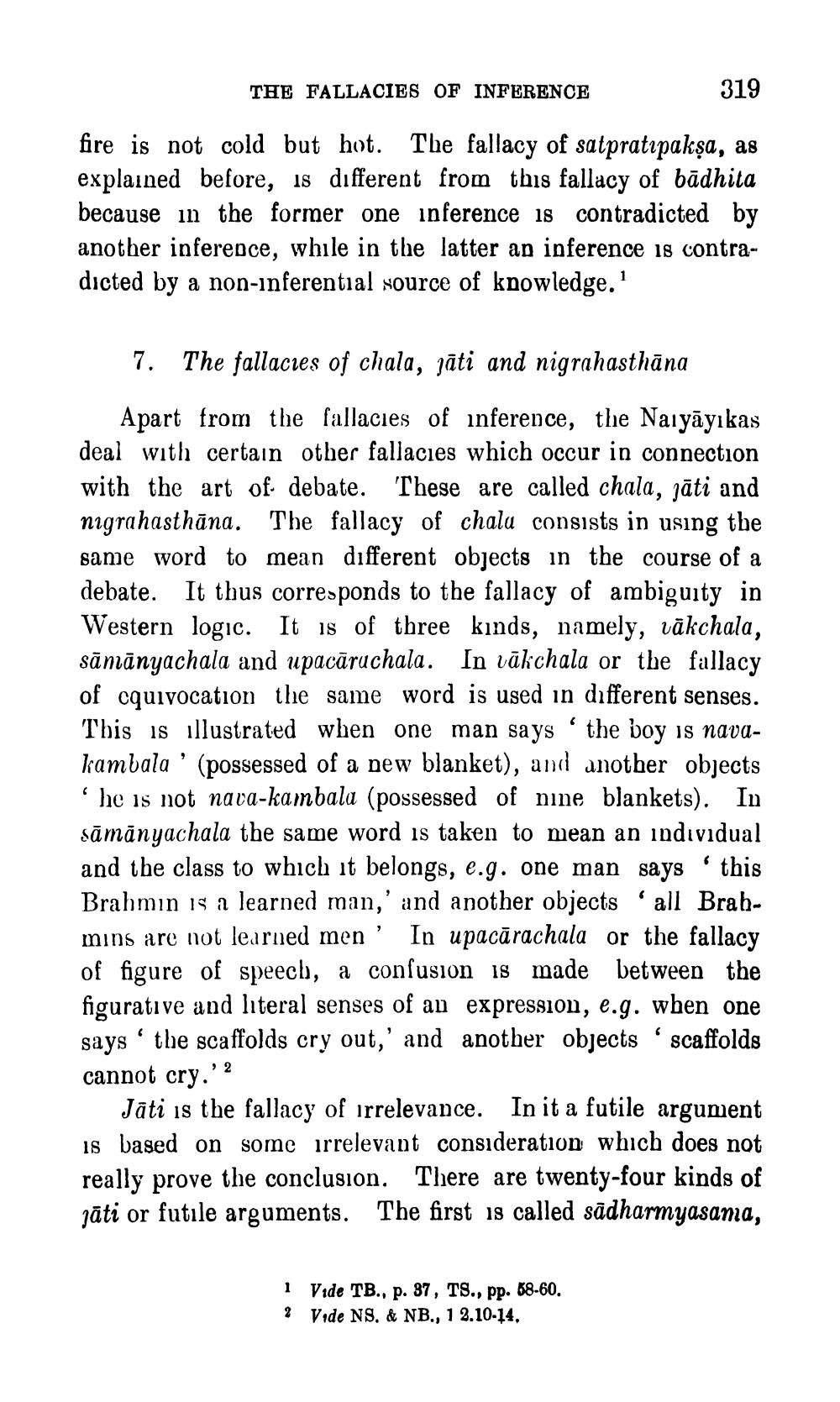________________
THE FALLACIES OF INFERENCE
319
fire is not cold but hot. The fallacy of satpratıpakşa, as explained before, is different from this fallacy of bādhita because in the former one inference is contradicted by another inference, while in the latter an inference is contradicted by a non-inferential source of knowledge.
7. The fallacies of chala, jāti and nigrahasthāna
Apart from the fallacies of inference, the Naiyāyıkas deal with certain other fallacies which occur in connection with the art of debate. These are called chala, jāti and nigrahasthāna. The fallacy of chalu consists in using the same word to mean different objects in the course of a debate. It thus corresponds to the fallacy of ambiguity in Western logic. It is of three kinds, namely, vākchala, sāmānyachala and upacāruchala. In vākchala or the fallacy of cquivocation the same word is used in different senses. This is illustrated when one man says 'the boy is navakambala' (possessed of a new blanket), and another objects
he is not nava-kambala (possessed of nine blankets). In sāmānyachala the same word is taken to mean an individual and the class to which it belongs, e.g. one man says this Brahmin is a learned man,' and another objects all Brahmins are not learned men' In upacārachala or the fallacy of figure of speech, a confusion is made between the figurative and literal senses of an expression, e.g. when one says' the scaffolds cry out,' and another objects 'scaffolds cannot cry.'?
Jāti is the fallacy of irrelevance. In it a futile argument is based on some irrelevant consideration which does not really prove the conclusion. There are twenty-four kinds of jāti or futile arguments. The first is called sādharmyasama,
1 Vide TB., p. 37, TS., pp. 58-60. 2 Vide NS. & NB., 1 2.10-14,




